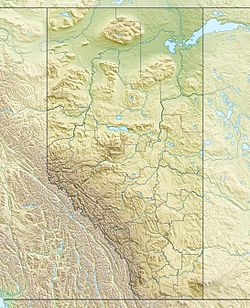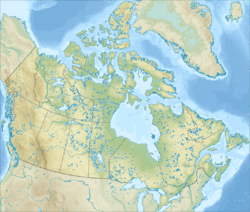Nightingale, Alberta facts for kids
Quick facts for kids
Nightingale
|
|
|---|---|
| Country | Canada |
| Province | Alberta |
| Region | Southern Alberta |
| Census division | 5 |
| Municipal district | Wheatland County, Alberta |
| Government | |
| • Type | Unincorporated |
| Area
(2021)
|
|
| • Land | 0.17 km2 (0.07 sq mi) |
| Population
(2021)
|
|
| • Total | 37 |
| • Density | 214.6/km2 (556/sq mi) |
| Time zone | UTC−07:00 (MST) |
| • Summer (DST) | UTC−06:00 (MDT) |
| Area code(s) | 403, 587, 825 |
Nightingale is a very small community known as a hamlet in southern Alberta, Canada. It is located within Wheatland County. A hamlet is smaller than a village or town, often with just a few homes and businesses.
Nightingale is found about 4 kilometers (2.5 miles) west of Highway 21. It is also about 53 kilometers (33 miles) east of Calgary, a much larger city.
Contents
Counting the People in Nightingale
What is a Census?
Every few years, countries like Canada count how many people live in different areas. This count is called a census. It helps the government understand how communities are growing or changing.
Nightingale's Population
In the 2021 Census, which was done by Statistics Canada, Nightingale had a population of 37 people. These 37 people lived in 10 homes. This was an increase from its population in 2016.
In the 2016 Census, Nightingale had 32 people living there. They also lived in 10 homes. This number was a big jump from its population of 15 people in 2011.
How Many People Per Square Kilometer?
To understand how crowded a place is, we look at its population density. This tells us how many people live in each square kilometer (or square mile) of land.
In 2021, Nightingale covered a land area of 0.17 square kilometers (about 0.066 square miles). With 37 people, its population density was about 214.6 people per square kilometer. This means it's not very crowded!
In 2016, Nightingale's land area was smaller, only 0.02 square kilometers (about 0.0077 square miles). With 32 people, its population density was much higher at that time, about 1,600 people per square kilometer, because the area counted was smaller.



